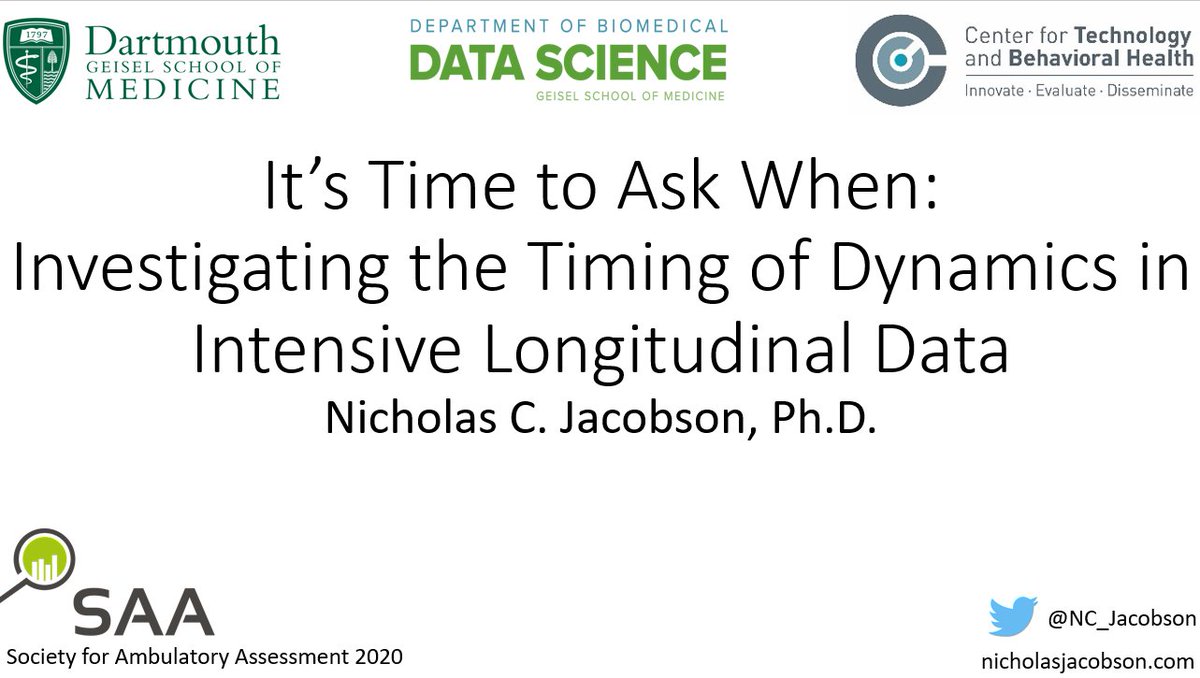Today, I had another presentation at @SAA2020aus on the importance of asking WHEN examining dynamic in intensive longitudinal data.
This is a summary for those who couldn't make it.
⚠️Warning⚠️
Again, I'm arguing against common practices.
(1)

BUT, we have some practices that in this field which are frankly bizarre unscientific heuristics that inform both design & analysis.
Timing is often ENTIRELY overlooked
(2)
Signal-contingent: pinging people & asking to respond usually with either random or windowed random windows
Interval contingent: complete assessments at regular intervals in time
(3)
If we mis-time our data collection, it has huge implications
Example: Movement of helicopter blades
Timing of assessments (i.e. shutter speed here) can make it look like they move very slowly, reverse direction of the blades
(4)
Theory!
If you have a strongly suggestive theory about timing, great, this almost never happens...so what should you do?
⛔️Common practice!: Researcher X, Y, & Z each used that interval before (but they had no rationale)!
Do not do this!
(5)
Try to sample your process systematically – it’s much better to oversample than undersample
Incorrect timing will not allow us to test our theories
(6)
Common practice: Look at dynamic processes concurrently or one unit in time (i.e. lag) later
✅ Great, IF you have a strong theory about timing (but you probably don't)
❌Not okay in the vast majority of intensive longitudinal data work
(7)
⛔Fit higher-order lags manually, false positives reign supreme
❓ Continuous time structural equation models, not bad but, not very flexible w/o higher order stochastic differential equations (which ridiculously hard to interpret)
❓Fractals, but hard to understand
(9)
The differential time varying effect model
Fits smooth curves in exploratory way then uses gold-standard approaches to confirmatory modeling
Works with: 1 to many variables, 1 to many people, high missingness
Well-validated:
link.springer.com/article/10.375…
(10)
ONLY ONE line of code:
out=LAG("X",differntialtimevaryingpredictors=c("X"),outcome=c("X"),data=exampledat1,ID="ID",Time="Time",k=9,standardized=FALSE,predictionstart = 1,predictionsend = 10,predictionsinterval = 1)
(11)
DESIGNING STUDIES:
Do: test theories w/ timing
Do: aim to oversample rather than undersample
ANALYZING STUDIES:
Do: Test lags if theorized (usually not)
Do: Explore higher order lags
(13)
nicholasjacobson.com/project/dtvem/
And a simple tutorial here:
nicholasjacobson.com/post/illustrat…
Please contact me if you’re trying this out and have any questions!
(14)
nicholasjacobson.com/files/talks/SA…
Thanks to all of you suffering through another twitter tirade
(/end rant)











